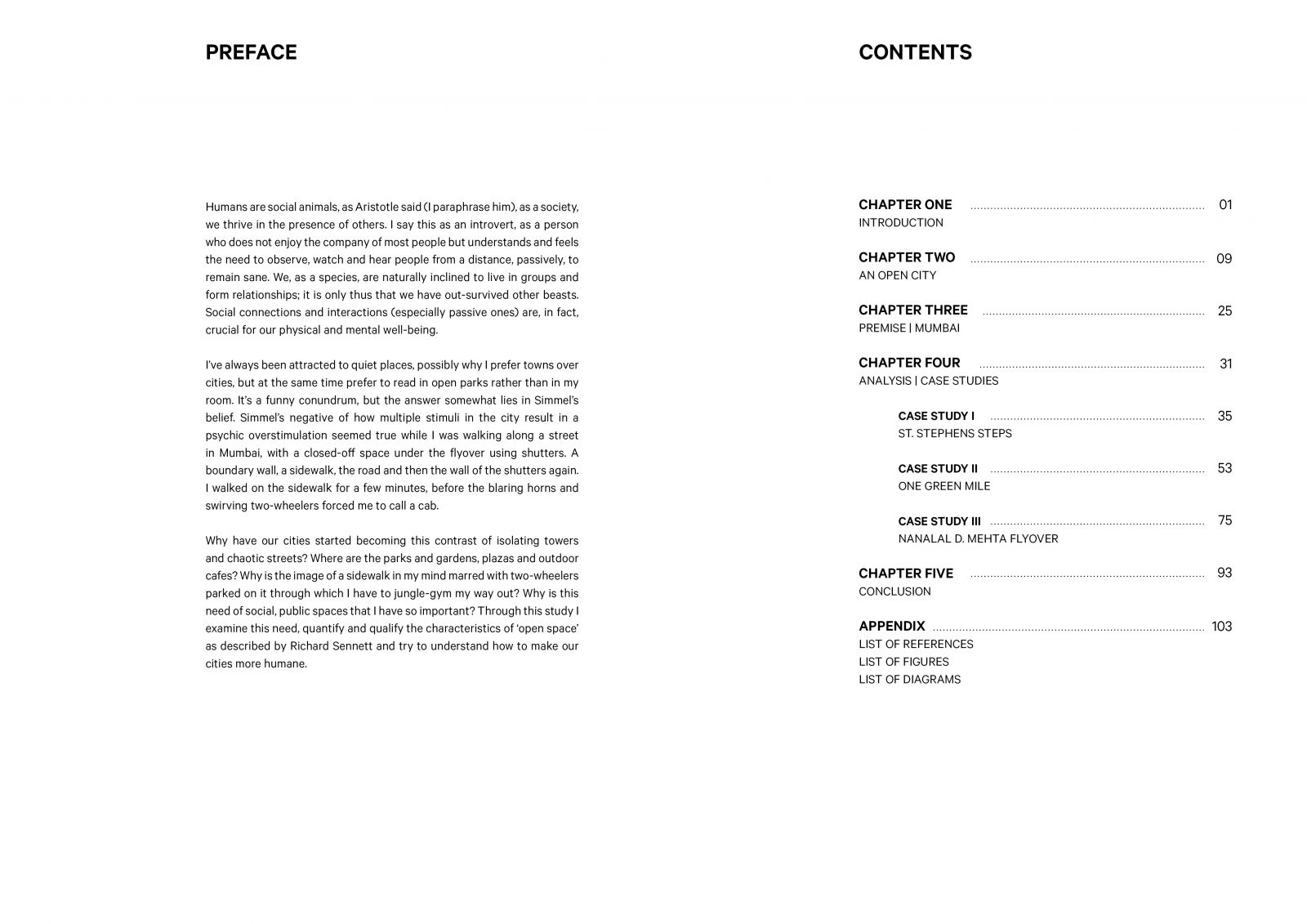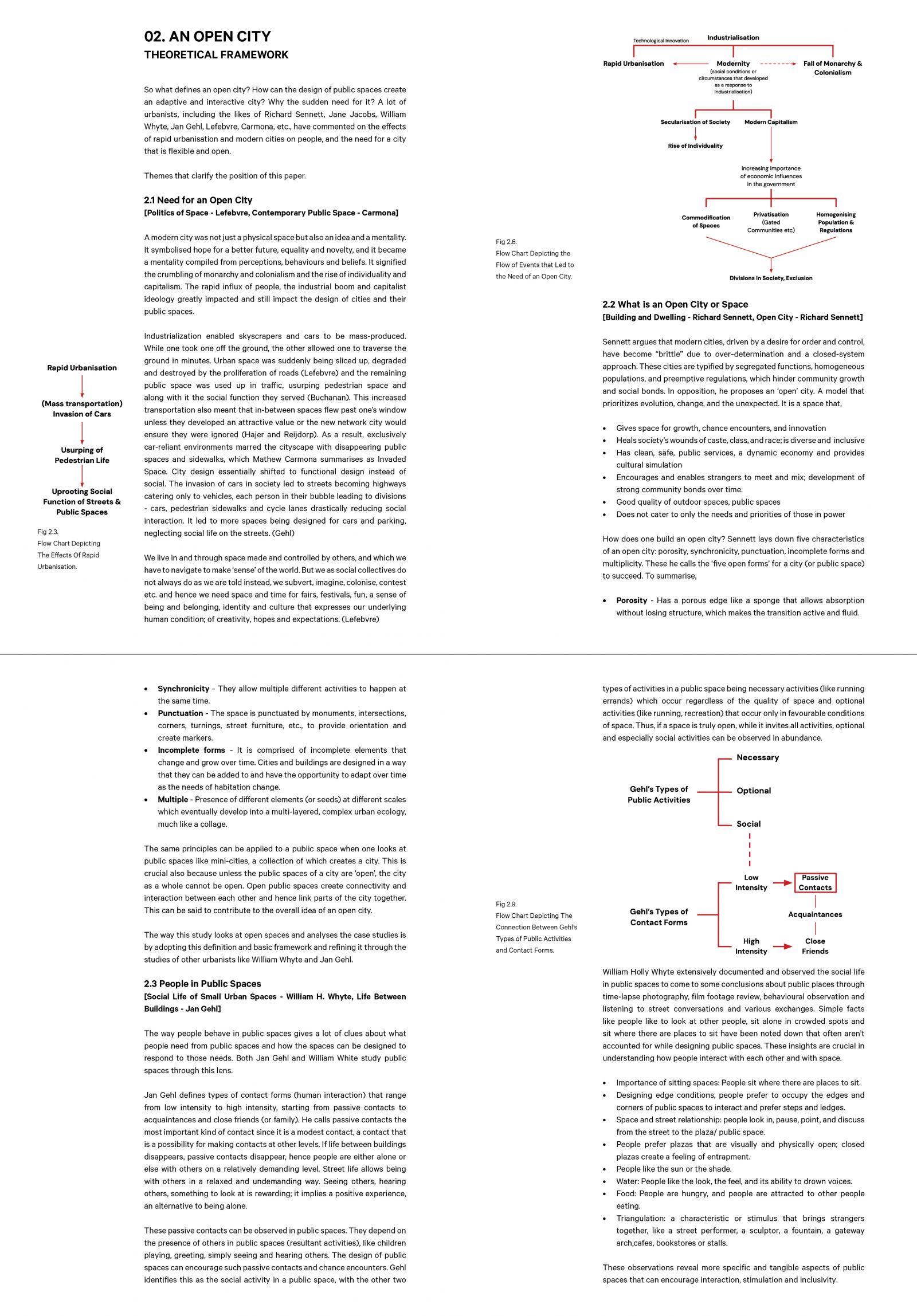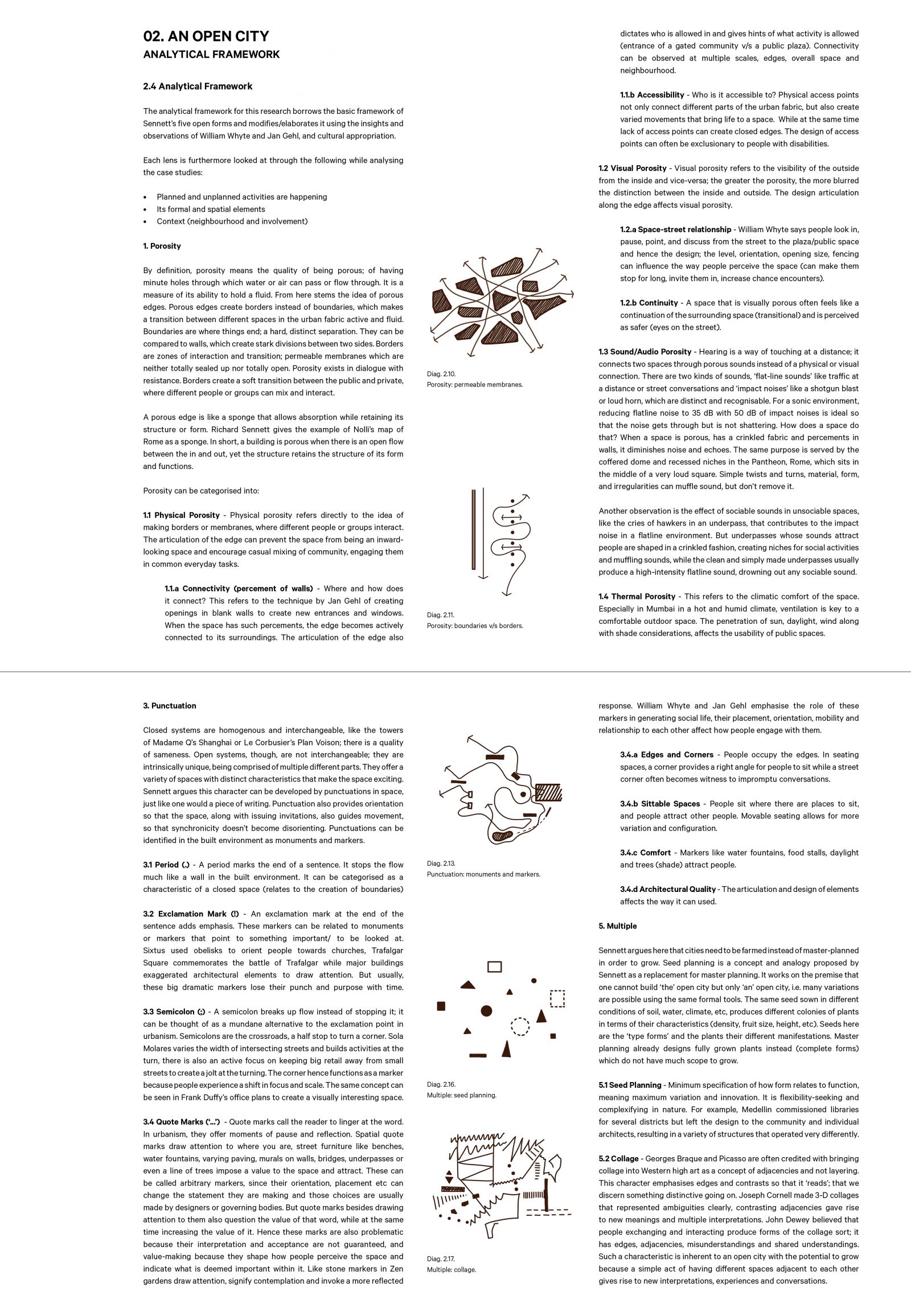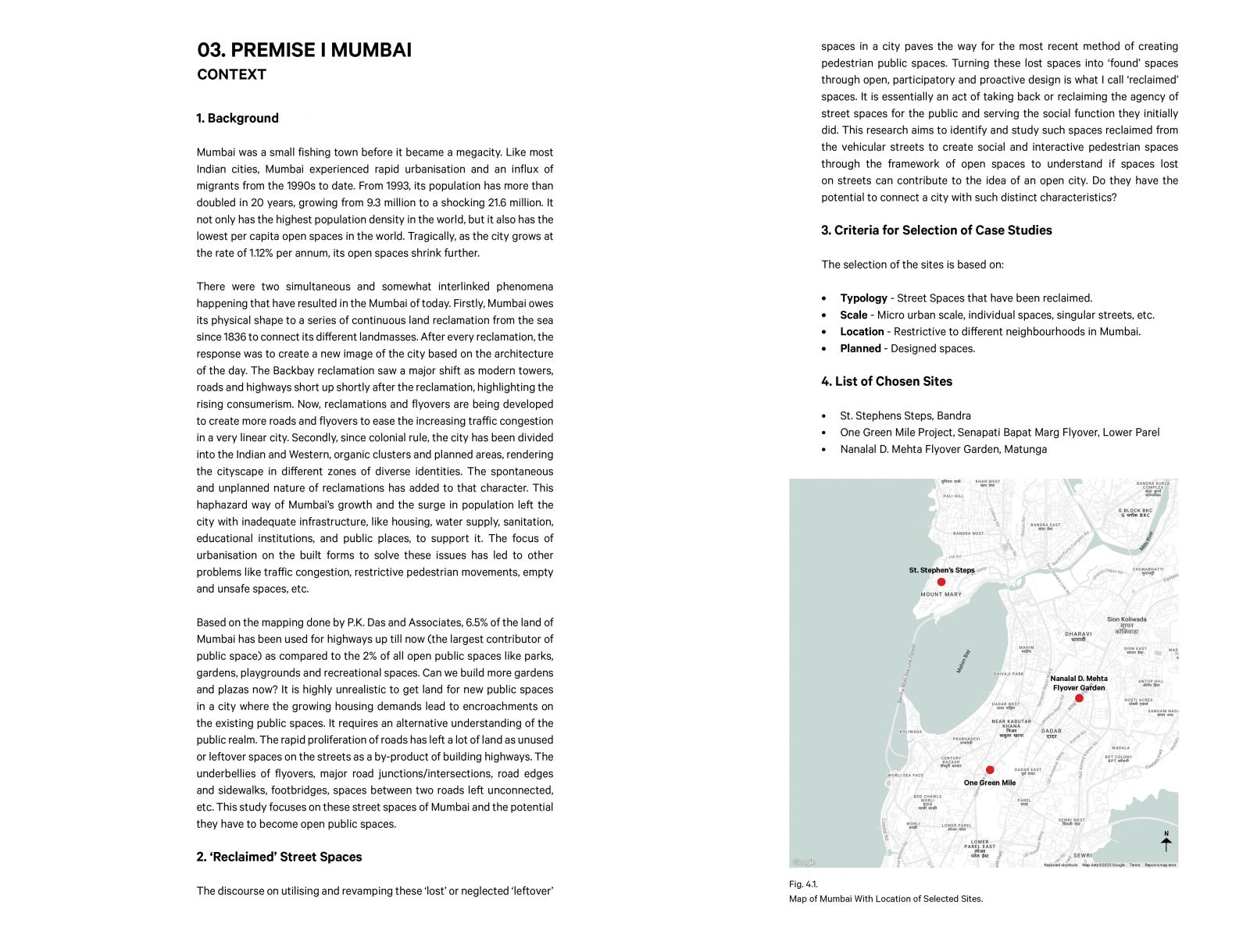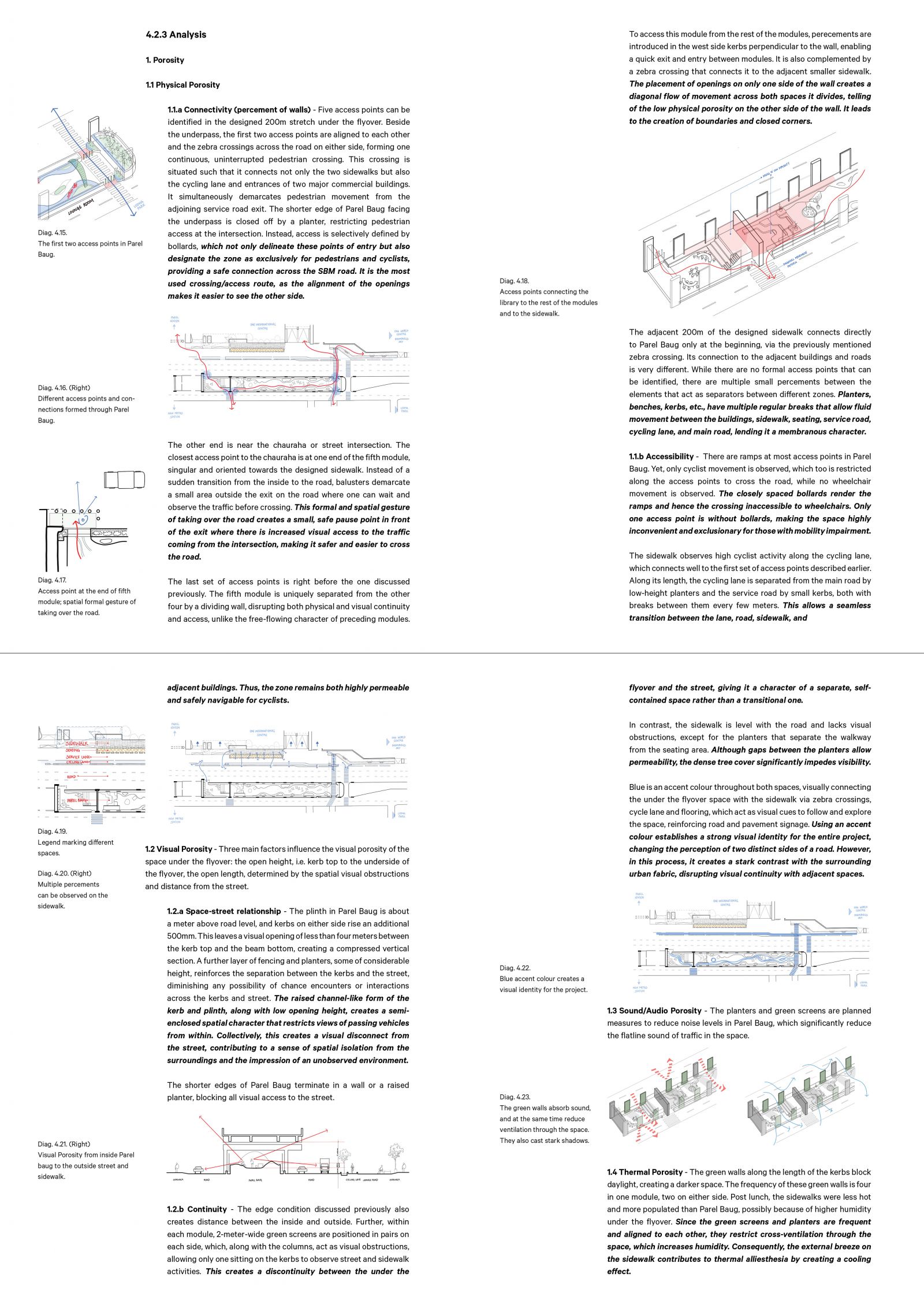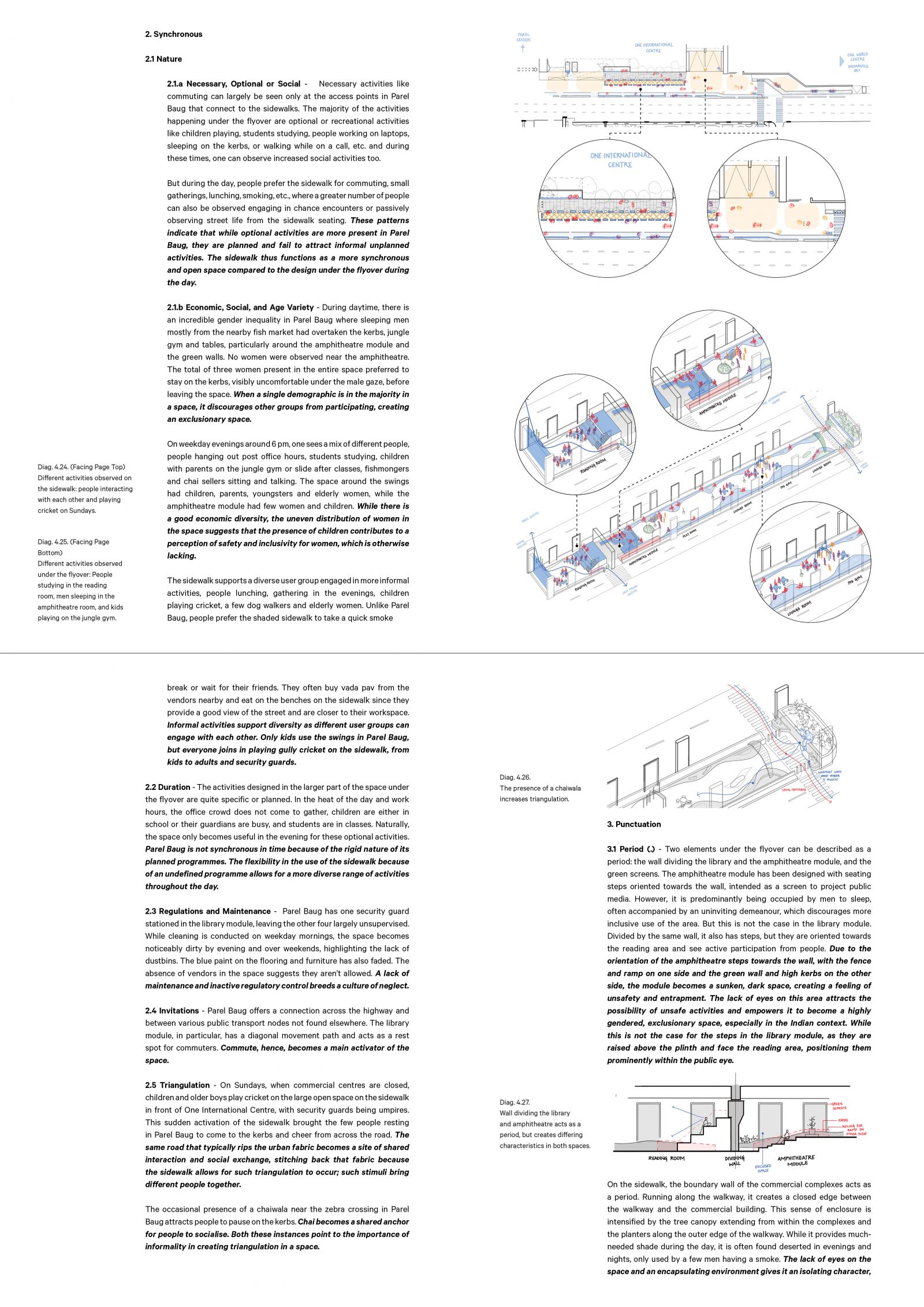Your browser is out-of-date!
For a richer surfing experience on our website, please update your browser. Update my browser now!
For a richer surfing experience on our website, please update your browser. Update my browser now!
Modern cities, as we call them, came to exist post-industrialisation, marked by industries, factories and increased transportation; rapid urbanisation changing the architectural/urban landscape of cities. The rise of capitalism in modern-day planning raises concerns of social inequalities by creating disparities and restricting public access. Much of today’s way of building cities can be categorised as a closed city devoid of toleration for the unplanned or unexpected. Urban planners and sociologists have long since advocated for an ‘open city’ in principle that respects human complexity, allows for growth and fosters creativity and interaction, before Richard Sennett coined that term. By facilitating connectivity and interaction, ‘open’ public spaces can not only link parts of the city together but become more inclusive, adaptive, and resilient.
What is the discourse on open cities in the Indian context? This study takes the case of Mumbai and its street spaces. Arguably the most urbanised and populous city in India, it is reeling from the effects of overpopulation and capitalism. Considering that highways are the largest contributors of 'public space' in the city, the research will study and compare the ‘reclaimed’ street spaces of Mumbai through the lens of an open city where ‘reclaimed’ refers to the recent acts of taking back the lost street spaces from vehicles through designed urban interventions and analyse if they can contribute to the idea of an open city.
